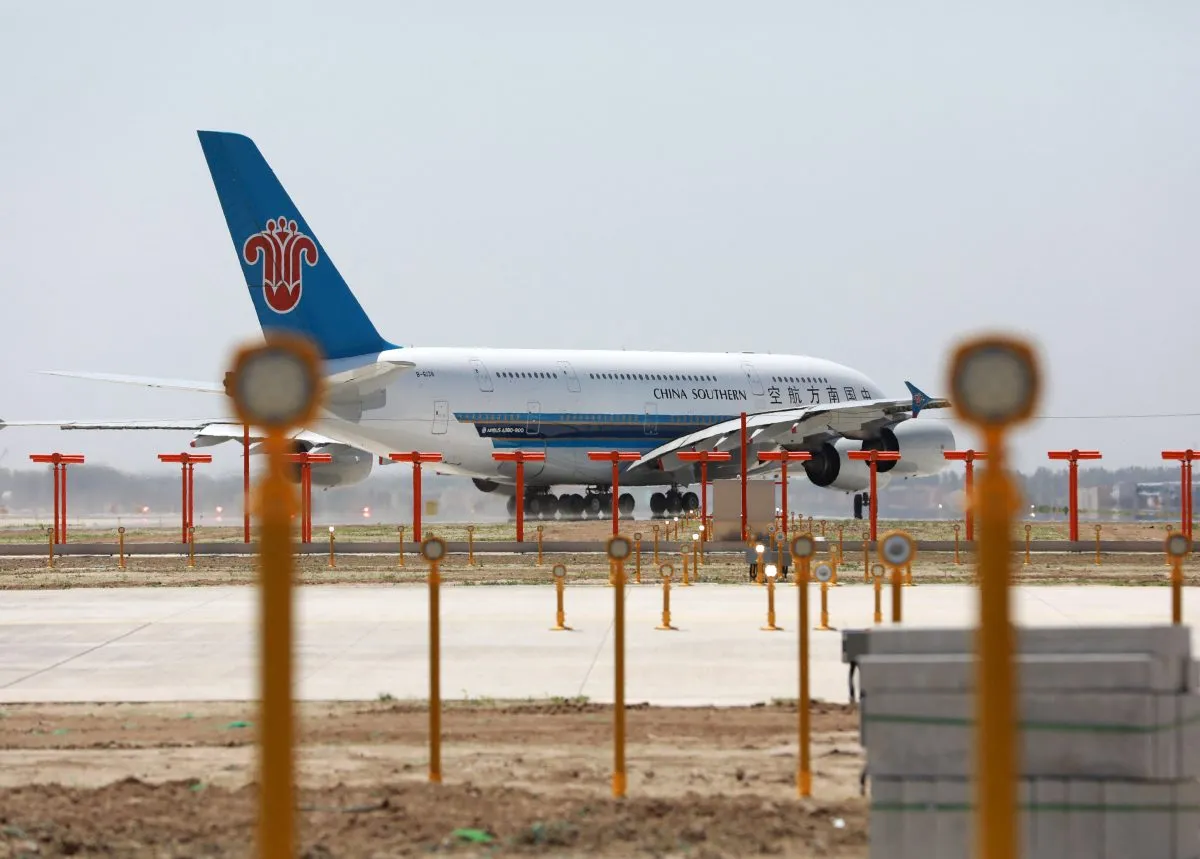Royal Air Maroc (RAM) and China Southern Airlines signed a memorandum of understanding in March to strengthen their cooperation and build an “air corridor” to respond to the growing travel demand between China and Africa.
The goal is to offer travellers a wider variety of travel options, leveraging China Southern’s extensive Asian network and RAM’s strong presence across the African continent. The airlines say that it will help avoid passengers having to make complex connections via Europe or the Middle East to get to their final destinations. According to the MOU, CSA and RAM will establish a code-sharing partnership, and will also cooperate in passenger and cargo transportation resources and third-party businesses.
This alliance represents “an important step in strengthening air connectivity between Africa and China,” according to Hamid Addou, President and CEO of RAM.
Addou added that both companies “are committed to offering travel experiences that foster closer ties between Africa and China and facilitate access to Morocco for Chinese tourists.”
“It’s an agreement between two companies that are important, and each at their own level – one in Asia and the other in Africa,” Geoffroy Bouvet, president of the Association of Professional Aviation Aircrew and a former Boeing-777 captain, told African Business.
“While it is not a traditional alliance, such as SkyTeam, Star Alliance or OneWorld, this partnership can provide customers with a seamless experience. They want a single point of responsibility.”
Such agreements function like “the wheel of a bicycle,” he said, “where hubs act as central points connecting disparate routes.”
“When an airline is centred around an airport and builds connections from there, linking hubs is essential – this is what alliances do. You connect the two hubs and agree on a fare and revenue share, interlining and codeshare,” he said.
RAM had already resumed the direct connection between Morocco and China in January 2025, linking Casablanca and Beijing with a direct route now operated by the national carrier three times a week.
Takeoff for World Cup 2030
This agreement is part of Morocco’s ambition to service increasing traffic in the run-up to the 2030 FIFA World Cup, which it will co-host with Spain and Portugal and which is expected to draw a significant number of Asia tourists.
Morocco plans to considerably improve and upscale its infrastructure over the coming years. Casablanca’s Mohammed V Airport is set to increase its capacity from 14 to 35 million by 2029, with the construction of a new terminal, thanks to a $1.55bn investment, according to the Moroccan Airports Authority (ONDA).
It is is already one of the busiest airports in Africa, processing almost 11 million transit passengers in 2024, according to the ONDA.
This partnership, and the country being “well-positioned geographically”, are giving Morocco a relative advantage in air travel, according to Bouvet. If this partnership works out, the flow between the two regions could increase significantly.
Furthermore, given developments in the wider African airlines sector, RAM is looking at tie-ups with other major opportunities on the continent, he said.
“Kenya Airways and Ethiopian Airlines, even though their geographical positioning was not the best, managed to achieve great growth. So there’s clearly a chance to make a move here,” he said.
However, he said that “it will take more alliances than just one. But you have to start somewhere.”
China’s ‘Air Silk Road’
The MoU says that RAM and China Southern will also be examining opportunities for cooperation in cargo and related activities, as part of China’s ‘Air Silk Road’.
More broadly, it is one of the many projects in Africa supporting China’s Belt and Road Initiative (BRI). The BRI, originally announced by President Xi in 2013, is a transcontinental project connecting China with Southeast Asia, South Asia, Central Asia, Russia, Europe and parts of Africa.
Qu Guangji, executive vice-president of CSA, said the deal will help to boost China’s Belt & Road initiative.
“The signing of this MoU is an important milestone for China Southern Airlines in response to the Belt and Road Initiative, and marks a new starting point for cooperation between China Southern Airlines and Royal Air Maroc,” he said.
Other African airlines have worked hard in recent years to boost air freight with China. Since 2020, Ethiopian Airlines’ cargo business represents an export volume to China exceeding 532,000 tons and an import volume approaching 200,000 tons, the carrier said in a press release. The airline boosted its freight offering during Covid-19 in response to plunging passenger demand.
In the first half of 2024, “the cross-border e-commerce transportation volume between China and Africa exceeded 13,000 metric tons, achieving a leapfrog growth over the same period of 2019, or before Covid-19,” Aman Wole Gurmu, Ethiopian Airlines’ country director for China, said.
In 2024, “the annual air cargo transportation volumes between China and Africa are expected to jump by 46% over the pre-pandemic levels,” he added.
“Without connectivity, there can be no economic development,” said Bouvet.
“I don’t see any antinomy in the fact that at some point air transport will be the first step in economic development.”
Challenges
However, Bouvet highlights some challenges.
Bouvet said “there is a difference in scale that is absolutely enormous,” between RAM and China Southern, as well as the two countries.
With China Southern operating more than 850 passenger and cargo aircraft – a “massive machine,” according to Bouvet – and RAM operating 55, the ratio between the two fleets is nearly 15 to 1.
Moreover, “the idea of creating a hub is not new,” said Bouvet. “When we used to travel from Central Africa to the northern countries, we would often pass through South Africa.”
But he warned that South African Airways, which had seen significant growth in the past, is facing a well-publicised raft of challenges after almost being liquidated. Even hub status cannot guarantee enduring profitability.
Despite RAM’s great positioning on the continent, “there is competition with East Africa, because when you come from Asia, going all the way to Morocco and then back down to the rest of Africa is not the shortest route,” he said.
Nevertheless, China Southern’s participation could bring a huge potential new market to Morocco. The airline ranked as the fifth-largest globally in terms of passenger volume, serving 152 million passengers in 2021, according to Statista.
A boost for African aviation
The number of seats offered by African carriers increased by 12.6% between March 2023 and March 2024, reaching 16.1 million, according to the African Airlines Association. This growth allowed airlines to generate $1.83bn in revenue in January 2024, a 14.75% increase from November 2023.
But Bouvet said there are still substantial oppportunities for regional growth.
“One should not think of a fixed-size cake,” he said.
“Air transport in Africa is limited at this point, there is no network that allows for intra-regional economic development. And it is clear that infrastructure is the key point for all development.”
With such partnerships, “the slices of the cake will be bigger, and everything that allows Africa to develop will also allow air transport to grow.”
“Thus, everyone will benefit, and even get bigger slices,” he concludes.
Want to continue reading? Subscribe today.
You've read all your free articles for this month! Subscribe now to enjoy full access to our content.
Digital Monthly
£8.00 / month
Receive full unlimited access to our articles, opinions, podcasts and more.
Digital Yearly
£70.00 / year
Our best value offer - save £26 and gain access to all of our digital content for an entire year!

 Sign in with Google
Sign in with Google 



